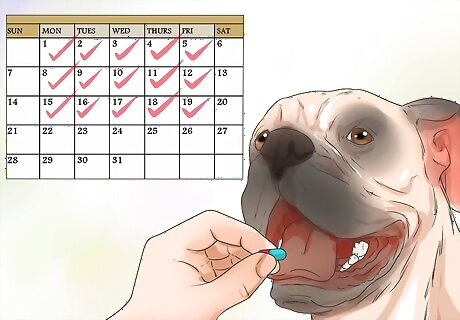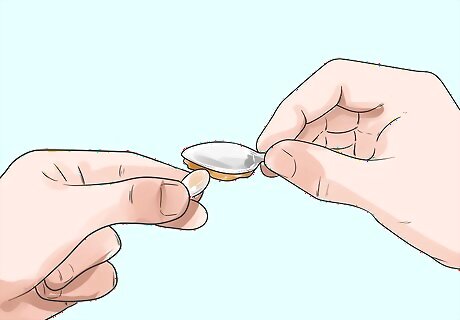
views
X
Research source
[2]
X
Research source
Freemantle E, Vanda M, Tremblay-Mercier J, et al. Omega-3 fatty acids, energy substrates, and brain function during aging. Prostaglandins, Leukotrienes and Essential Fatty Acids 2006;75:213–220.
Because of the positive results in humans, an interest in the use of fish oils in veterinary medicine followed. In dogs, fish oil supplements have been used to treat inflammatory conditions, skin diseases, joint diseases (such as arthritis), and to support renal health. As long as a reasonable dose is given, and your dog’s health is monitored by a veterinarian, their use can be a valuable tool in controlling certain health conditions.
Assessing Whether Your Dog Needs Fish Oil

Use fish oil to add essential fatty acids to your dog's diet. Fish oil contains two types of omega-3 fatty acids: eicosapentaenoic acid (EPA) and docosahexaenoic acid (DHA.) EPA and DHA are considered essential fatty acids (EFA) in that the body needs a dietary source of these fatty acids. They cannot be produced by the body. There is one other type of omega-3 fatty acid, alpha-linolenic acid (ALA), which is derived from plants. Dogs can only efficiently use EPA and DHA, as ALA needs to be converted by the body to fatty acids and the dog’s body inefficient at this conversion.

Use fish oil to treat skin allergies. If your dog suffers from skin allergies, or painful arthritis, fish oil could help your dog's condition. It takes about 3-4 weeks for the levels of fish oil to build up in the body, so you need to keep giving a daily dose for at least a month to decide if it has helped your dog. If you’re supplementing a visibly healthy dog, you may not see any outward sign that the fish oil supplement is working.

Give fish oil to an older dog. When dogs get older, their joints can get weaker. Fish oil tablets can help the tissue in the joints become stronger allowing an older dog to walk easier. Fish oils are also beneficial to heart and cardiovascular health, especially in older dogs. In both young and old large dogs, hip dysplasia can happen. However, adding fish oil to the dog's diet, in addition to exercising it with gentle swimming, can help build back the ligaments in the hips.
Adding Fish Oil to Your Dog's Diet

Figure out the correct dosing. While your veterinarian is the best source for dosing advice for an older or sick dog, general dosing instructions will work on a healthy dog. For healthy dogs, doses can range from 50 to 220 mg per kilogram of weight or 22 to 100 mg per pound of body weight. This range of dosages are usually well tolerated. Do not use any higher doses than these, as adverse effects can start at higher doses. To make dosing easier, particularly for small dogs, manufacturers have made small capsules, chews and liquid forms. Generally the oil is placed on the food and most dogs readily eat it this way.

Consult with your veterinarian about dosing for an older or unhealthy dog. If your dog is unhealthy or suffers from any disease ask your veterinarian for advice before using fish oil supplements. In some cases they can make a condition worse.

Add the fish oil to your dog's meals. If you are giving the fish oil in pill form, and your dog won't eat the pill, smear it with peanut butter before you give it to the dog. Follow with a dog treat to make sure the dog has swallowed the pill.

Be on the look out for the possible adverse effects of fish oil. Fish oils can cause some negative effects on a dog’s health if doses are not calculated correctly or if they are given to dogs with chronic health problems. In lower doses fish oil is usually well tolerated even by dog’s with health problems, but adverse effects can include: Increased bleeding Stomach upset and diarrhea Pancreatitis Slower wound healing Insulin sensitivity (use with caution in dogs with diabetes and only under a veterinarian’s guidance) Weight gain Toxin exposure (due to the problem with contamination of fish)


















Comments
0 comment